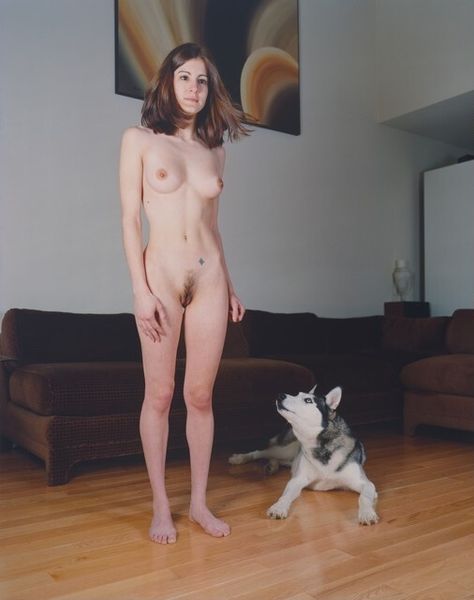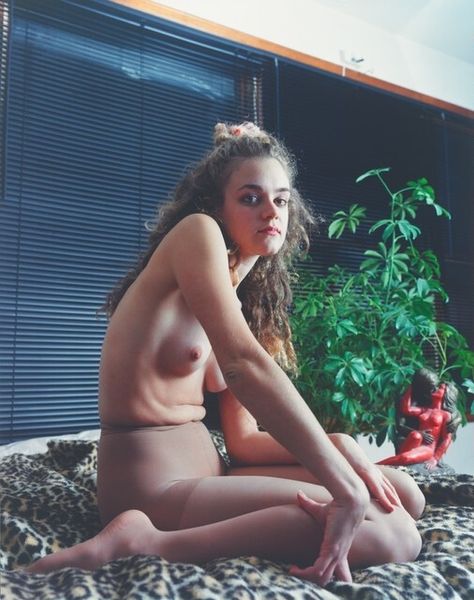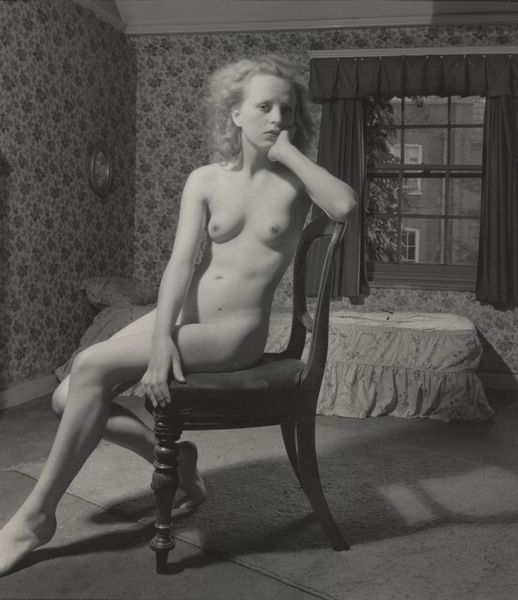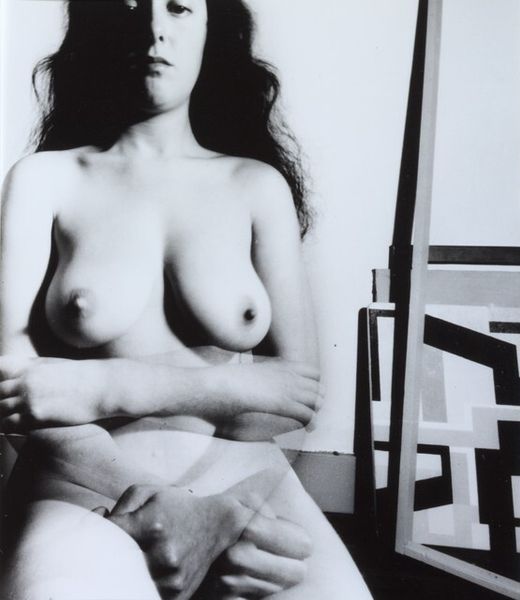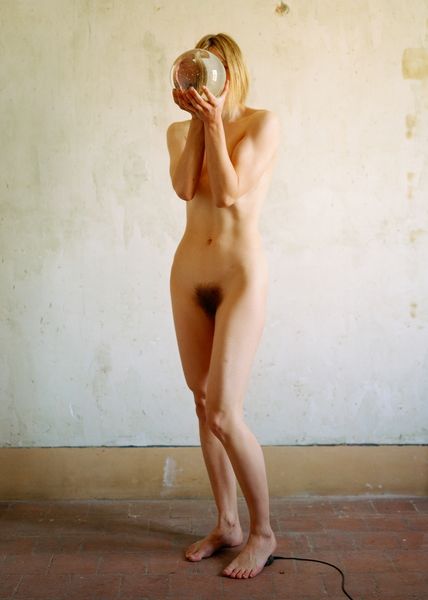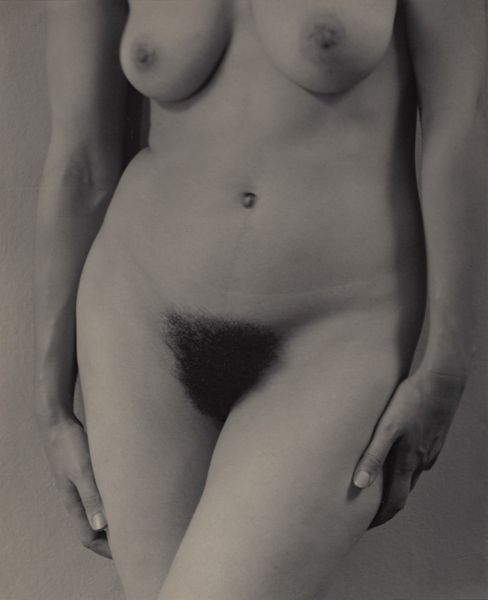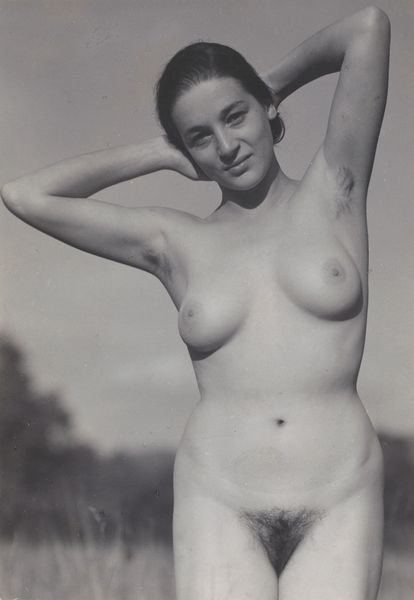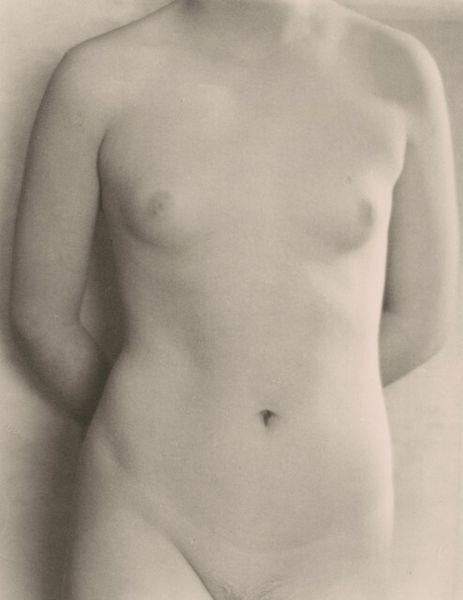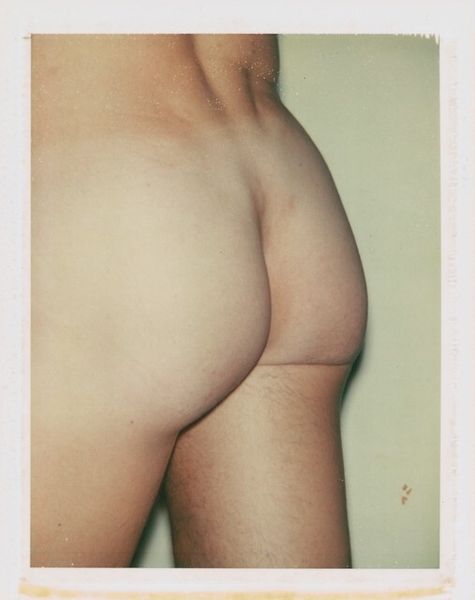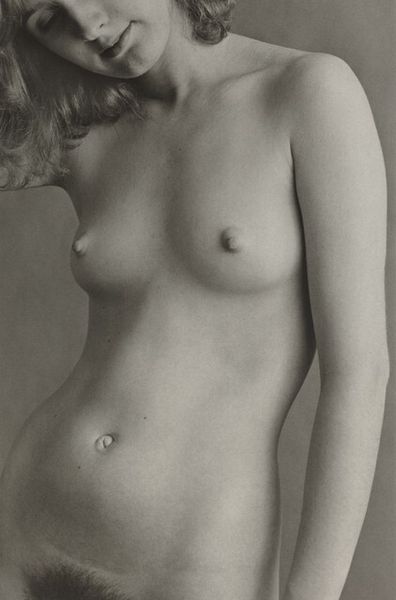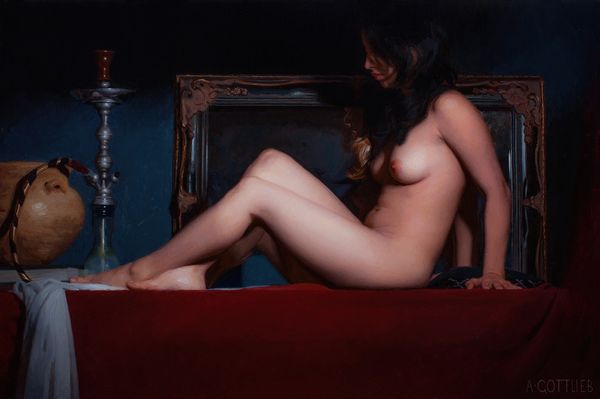
Dimensions: image: 115.57 × 91.44 cm (45 1/2 × 36 in.)
Copyright: National Gallery of Art: CC0 1.0
Curator: Katy Grannan's photographic print, dating to 1998 and titled "Untitled (from the Poughkeepsie Journal)," immediately strikes me. There's a bluntness to its composition and the sitter's gaze that’s quite arresting. Editor: It does have a captivating coolness. The slightly awkward staging, with that generic interior and dated carpet, juxtaposed against the unclothed female figure… It feels self-aware, almost deliberately challenging idealized representations. Curator: Grannan often recruits her subjects through newspaper advertisements, disrupting the traditional art world sourcing of models. That speaks to her interest in democratizing representation, giving visibility to those often overlooked in mainstream imagery. The fact that it came out of an advert for the "Poughkeepsie Journal" shows that desire to engage with broader society. Editor: Precisely. It is a political act in itself. It invites questions around vulnerability, exposure, and power dynamics. There is that pervasive sense of the ‘gaze’ being subverted by the sitter’s direct eye contact, which seems to reclaim agency within the photographic process. She becomes a subject, instead of an object. Curator: And the setting, the slightly worn interior – the shag carpet, that faux stone fireplace – places the figure within a recognizable, almost mundane, context. Editor: A mundane context which is essential for Grannan to frame larger dialogues, where intimacy, privacy, and the media meet in the subject’s reclamation of their own sexuality. The image, for all of its calm composure, generates a significant conversation. Curator: The c-print’s format itself is interesting in the history of photographic techniques. Postmodern photography made a virtue out of those once seen, industrial techniques. It also highlights photography's role in creating images in consumer culture. Editor: Considering its title, “Untitled (from the Poughkeepsie Journal),” it implies something open, ongoing, a story waiting to be written, challenging our interpretations of art, identity and its relation to commerce. The art lies not only in its aesthetic, but what the image incites. Curator: Agreed, its title, as well as its materials, point to an intention to disrupt and generate debate. It also challenges art historical ideas around media culture and the idea of originality. Editor: Grannan gives the contemporary image of the female figure a fresh and politically potent point of discussion, prompting us to consider these figures in both social and intimate spheres.
